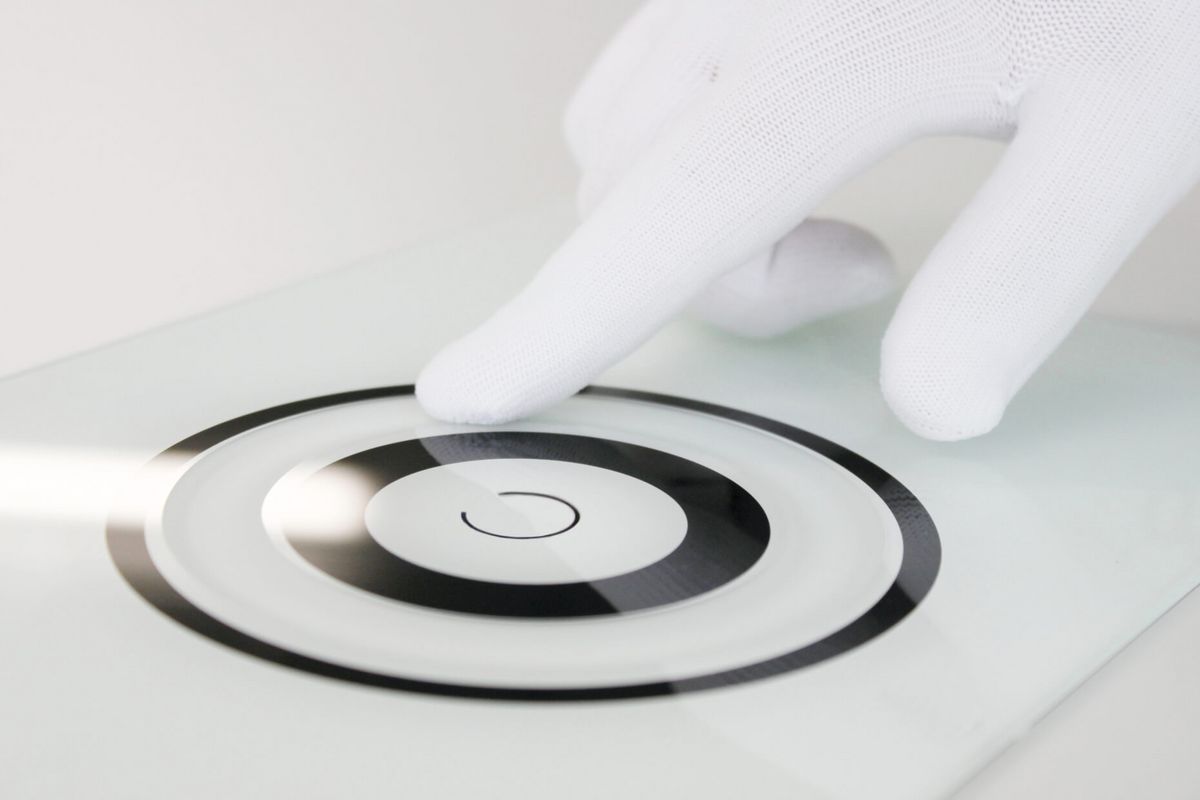PCAP technology is based on a capacitive (CAP) principle. The user changes the charge of an electric field created on the surface of the sensor by touching it with one or more of their fingers. These changes are recognised as input by a downstream touch controller. The sensor surfaces are installed behind a glass cover and perfectly protected against damage or wear.
Thanks to its specialised, protected construction, in PCAP technology capacity changes are indirect. This means they are projected through the cover glass (the P in PCAP). (The abbreviation PCT is also used for this type of technology, or projected capacitive touch). The following criteria are some reasons for choosing PCAP technology.

Advantages:
Disadvantages:
Sensor structures
PCAP technology sensors can be constructed using glass or foil. Both of these typically use a glass cover.
Glass sensor
In a glass sensor, the transparent, conductive coating is applied to the front and back sides of a glass carrier
(OGS, one glass solution, high transparency). This indium tin oxide coating is also abbreviated ITO.
Successful glass sensor processing since 2014!
Advantages:
Disadvantages:
(The disadvantages is compensated by the latest equipment)
The glass substrate makes processing more difficult
Foil sensor
In foil sensors, a combination of multiple foils coated in ITO serves as the substrate.
Advantages:
Disadvantage:
Available sizes for PCAP technology:
4.3 zoll to 65 zoll